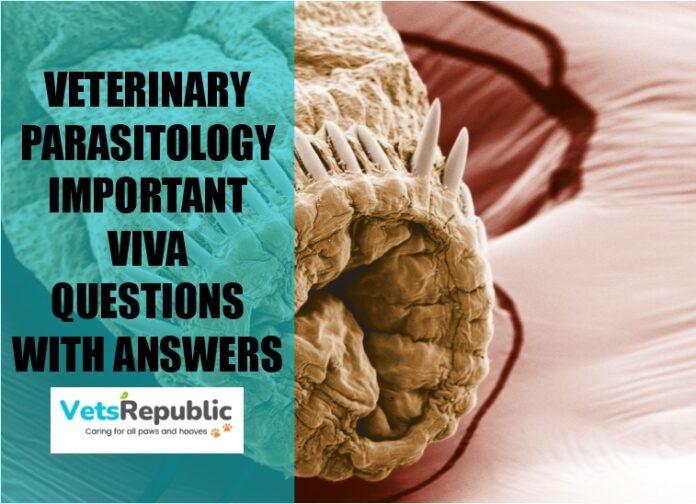In this article, we will share with you a list of veterinary parasitology important viva questions with answers. This list contains the most common and frequently asked questions asked in the viva sessions. we have mentioned the questions and answers in basic to advanced sequences to make it more helpful for the students. These questions will be helpful for the students seeking guidance regarding the type of questions and pattern in which viva is taken. So stay connected.
Veterinary Parasitology Important Viva Questions With Answers
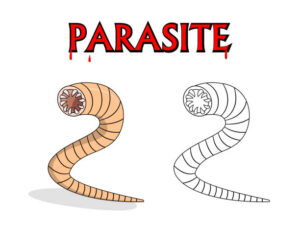
- What is a parasite and how is it defined?
Answer: A parasite is an organism that lives on or inside another organism (the host) and obtains nutrients at the expense of the host, often causing harm.
2. What are the different types of parasites?
Answer: Parasites can be categorized as protozoa, helminths (worms), ectoparasites (external parasites like ticks and lice), and parasitic fungi.
3. How do parasites differ from other organisms?
Answer: Unlike predators, parasites typically do not kill their hosts immediately but rely on them for nutrients or shelter. This dependency distinguishes them from predators.
4. What is the life cycle of a typical parasite?
Answer: Parasites often have complex life cycles involving multiple hosts or life stages, such as eggs, larvae, pupa, and adults, adapting to different environments within each stage.
5. How do parasites obtain nutrients and survive within a host?
Answer: Parasites acquire nutrients by feeding on the host’s tissues, blood, or ingesting the host’s digested food. They’ve evolved various mechanisms to evade host defenses.
6. What are the effects of parasites on their hosts?
Answer: Parasites can cause a range of effects from mild discomfort to severe illness, affecting the host’s health, behavior, reproduction, or even causing death.
7. How do parasites reproduce?
Answer: Parasites reproduce through various methods like sexual reproduction, asexual reproduction, or laying eggs, often utilizing intermediate hosts or vectors for transmission.
8. Can parasites infect multiple species or are they host-specific?
Answer: Some parasites are host-specific, targeting only one species, while others have a broader range and can infect multiple species.
9. What are some examples of common parasites affecting humans and animals?
Answer: Examples include malaria (caused by the Plasmodium parasite), tapeworms, hookworms, fleas, ticks, and various gastrointestinal parasites.
10. How do scientists classify and study parasites?
Answer: Scientists classify parasites based on their morphology, life cycle, and genetic characteristics. They study them through microscopy, molecular techniques, and ecological investigations to understand their impact and develop treatments.
Mode Of Reproduction And Life Cycles Of Parasites
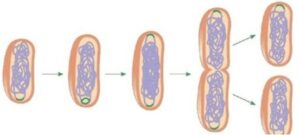
11 What are the different types of life cycles in parasites?
Answer: There are different types of life cycles of the parasites depending upon the species and host specificity.
- Direct Life Cycle: The parasite completes its life cycle within a single host species
- Indirect Life Cycle: Requires multiple hosts to complete its life cycle, often involving intermediate hosts or vectors.
- Monoxenous Life Cycle: Involves only one host species throughout the entire life cycle.
- Heteroxenous Life Cycle: Requires multiple hosts of different species to complete its life cycle.
12. Explain the mode of reproduction of the parasites.
Answer: Two types of reproduction in parasites:
- Sexual Reproduction: Involves the fusion of male and female gametes (sex cells) within or outside the host organism.
- Asexual Reproduction: Some parasites reproduce asexually, generating offspring without the involvement of gametes or mating.
13. Define the types of sexual reproduction in parasites
- Hermaphroditism: Some parasites are hermaphrodites, meaning they have both male and female reproductive organs within the same individual.
- Cross-fertilization: It mostly occurs in multicellular parasites e.g. especially worms. It involves two different organisms i.e male and female and their union produces the offspring.
14. Define the types of asexual reproduction in parasites:
Answer: Three main types of asexual reproduction mostly occurs in protozoan parasite which is unicellular i.e Giardia, Plasmodium etc.
- Binary Fission: In this process, the parasite’s cell divides into two identical daughter cells. Each daughter cell then grows and matures into a complete organism.
- Budding: In this process, a new individual grows as an outgrowth or bud from the parent organism. This bud then separates and develops into a new, independent organism.
- Fragmentation: Fragmentation, as a mode of reproduction, is a form of asexual reproduction where an organism breaks into fragments, and each fragment has the capability to develop into a new individual.
Protozoan Parasites
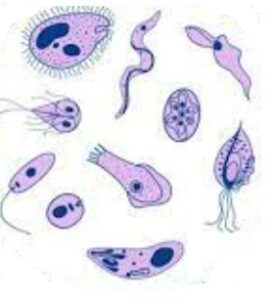
15. What are protozoan parasites? Define some species of phylum protozoa?
Answer: The protozoan parasites are unicellular, motile and eukaryotic living organisms. They are associated with causing various types of diseases in animals and humans sector as well.
Protozoan parasite species: 1. Giardia lamblia 2. Plasmodium spp 3. Entamoeba histolytica 4. Toxoplasma gondii 5. Trypanosoma brucei 6. Cryptosporidium spp 7. Leishmania spp Note: There is an easy mnemonic we have created to remember these species for exams. ”Gentle People Eat Tasty Treats, Creating Lovely Trinkets.”
Helminths
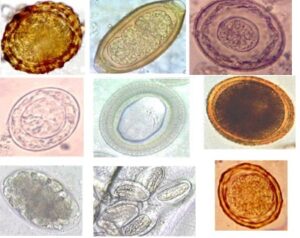
16. Define the morphological structure of Helminths.
- Answer: The helminths are multicellular parasitic worms having different body structures depending on their classification i.e. roundworm, tapeworm, and segmented worm.
- They contain a hard protective structure called tegument used for surface protection.
- They may have a complete or incomplete digestive system depending on the species.
- They also contain an organ of attachment i.e. suckers, spines, and hooks.
17. Explain the classification of helminths and enlist some of their species.
Answer: They are divided into three main categories based on morphology mentioned below:
- Trematode (Flukes
- Nematode (Roundworms)
- Cestode (Tapeworms)
Veterinary-Associated Diseases And Their Treatment
18. What is giardiasis? Write its signs, symptoms, and drug of choice.
Answer: It is a parasitic infestation caused by protozoan parasite. It causes the following symptoms after the onset of disease:
- Watery-diarrhea
- Abdominal cramps
- Gas or flatulence
- Nausea
- Dehydration
- Fatigue
The drug of choice for animals is fenbendazole.
19. Define malaria, its signs, symptoms, and drug of choice.
Answer: Malaria is a dangerous infectious disease caused by plasmodium species causing the following signs and symptoms
- Fever
- Chills
- Sweating
- Headaches
- Nausea and vomiting
- Muscle pain and fatigue
The drug of choice for animals in case of malaria is chloroquine, mefloquine, and doxycycline
20. Define amoebiasis disease. What is its drug of choice?
Answer: Amoebiasis is a parasitic protozoan disease caused by Entamoeba histolytica causing the following signs and symptoms.
- Diarrhea: Often with abdominal discomfort or cramping.
- Loose stools: These may contain blood or mucus.
- Abdominal pain or tenderness.
- Reduced milk production.
- Fatigue.
- Flatulence and bloating.
- Severe abdominal pain and cramping.
- Persistent diarrhea with blood or mucus.
- Fever.
- Dehydration.
- Weight loss.
The drug of choice is Metronidazole (for non-invasive). For invasive condition, a combination of Metronidazole and Paromomycin.
21. Define Toxoplasmosis, its signs, symptoms, and the drug of choice.
Answer: It is a disease caused by species of the genus Toxoplasma indicating the following signs and symptoms in animals.
- swollen lymph nodes
- muscle aches
- blurred vision and headaches in severe cases
- Eye damage is due to congenital transmission in newborn animals.
Drug of choice is Pyrimethamine and sulfadiazine.
22. Explain trypanosomiasis briefly. what are the signs, symptoms and drug of choice for this disease?
Answer: Trypanosomiasis is a protozoan parasitic infection which is caused by the genus Trypanosoma. It causes sleeping sickness diseases with the following signs and symptoms.
- First Stage
- Fever
- Headaches
- Swollen lymph nodes
- Second Stage (Cerebral Trypanosomiasis)
- Disturbance in sleep pattern
- Poor muscle coordination
- seizure
The drug of choice for this disease is Suramin (for the early stage) and Melarsoprol (for the late stage)
23. Define Cryptosporidiosis. What are its signs and symptoms?
Answer: Cryptosporidiosis is a parasitic infection caused by the protozoan parasite Cryptosporidium. It commonly affects the intestines causing the following signs and symptoms
- Watery diarrhea
- Stomach cramps or pain
- Nausea
- Vomiting
- Fever
- Dehydration
- Weight loss
The drug of choice for this infection is Nitazoxanide.
24 Define Leishmaniasis. What are its signs and symptoms?
Answer: The leishmainasis is an infectious disease caused by leishmania parasite. It is spread by the bite of the sandfly. There are three types of leishmania infections given below.
- Cutaneous leishmaniasis: This form typically manifests with skin lesions at the site of the sandfly bite (drug of choice is stibogluconate)
- Mucocutaneous Leishmaniasis: This type affects both the skin and mucous membranes, particularly those of the nose, mouth, and throat. (drug of choice is amphotericin)
- Visceral leishmaniasis: This is the most severe form and affects internal organs such as the spleen, liver, and bone marrow. (drug of choice is liposomal amphotericin)
Important Guidelines
After providing you with all the necessary information about veterinary parasitology important viva questions with answers, we hope that this comprehensive list of viva questions will help you in your exam sessions. Hope that your confidence and dedication is the key that will help you get through these exams. So work hard, stay positive, and believe in yourself.
If you are interested in gaining more information regarding the exam point of view then visit this site for more informative and authentic content.
You might also be interested in:
Animal Breeding And Genetics Important Viva Questions [All Details]

The Vets Republic website has initiated its journey to convey information that is useful for the veterinarian audience. Anything that we have published here is just for educational purposes. We have not posted any copyrighted content Your continuous support would be highly appreciated.

This article is just for educational purposes and to convey important information to our audience. The content that we have published on our website is not collected or plagiarized from any source. We are just sharing our experience If anyone finds a text that is plagiarized from any source in our articles, please send us an email at Rizqum789@gmail.com and we will remove it within 24 hours.

